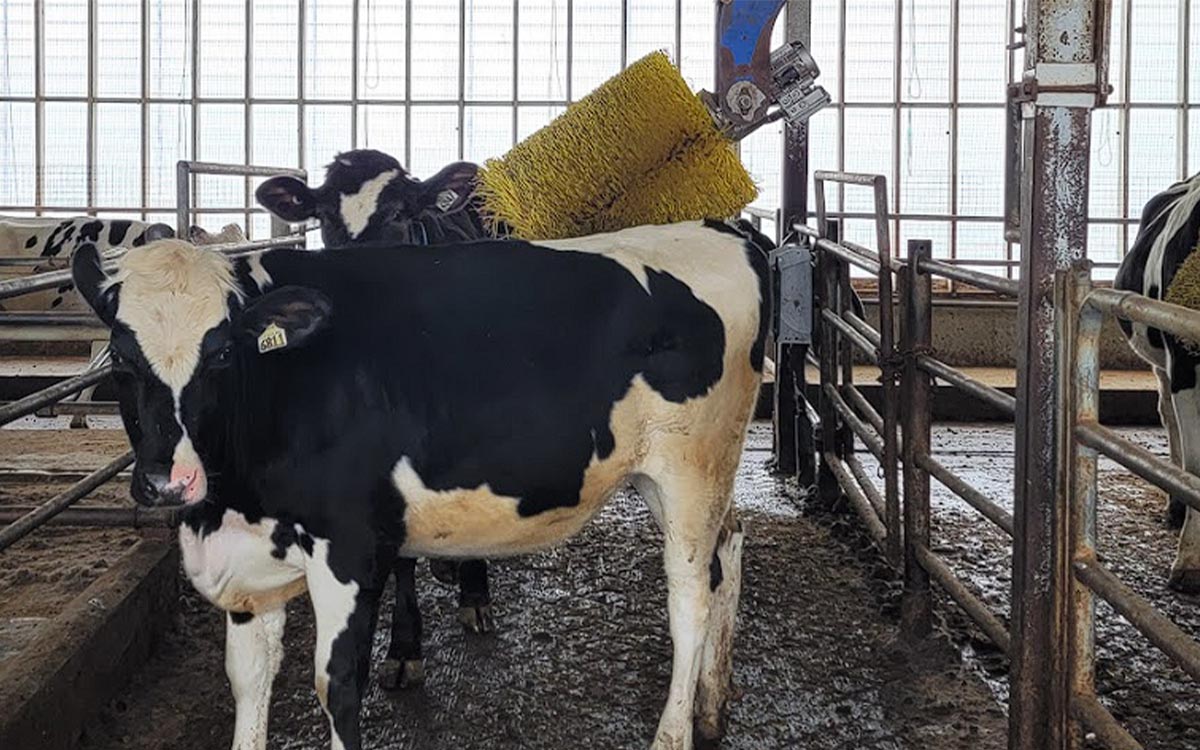Every farmer has had to deal with lameness in cattle at some point. The successful ones aim to prevent and control it by following innovation in the industry. Luckily, we live in a digital age. What I mean is that we can quickly access valuable information and benefit from the experience shared by colleagues and experts.
A couple of weeks ago, I was lucky enough to find a great webinar revolving around lameness in cattle, dairy cows to be precise. Hosted by AHDB Dairy, it dealt with innovation in hoof care. The expert giving this presentation was Jon Huxley, Professor of Cattle Health and Production at Nottingham University Veterinary School. The webinar came via the EuroDairy network.
Prof. Huxley focused on the lesions of claw horn disruption: sole ulcer, sole haemorrhage, and white line disease. According to him, sole ulcer and sole haemorrhage are in the same category. He sees them as different levels of severity of the same disease.

Sole ulcers and sole haemorrhage are manifestations of the same underlying conditions. Via Webinar | Innovation in Hoof Health

White line disease in different stages. Via Webinar | Innovation in Hoof Health
What I found very interesting was Prof. Huxley’s overview of the factors responsible for excess pressure on the dermis and thus leading to lameness in cattle.

What causes excess pressure on the dermis? Via Webinar | Innovation in Hoof Health
The presentation boiled down to this:
A. Environmental risk factors
The first and foremost risk here is concrete. Prof. Huxley noted that we put it for our own benefit. As he phrased it, “It’s a truly horrible substrate from an animal perspective.”
Standing and lying times are another piece of the environmental picture. What we should consider here is mitigating the pressure through optimal cubicle design and time management. In other words, we need an arrangement that keeps cows off their feet for all the time they are not eating, drinking, being milked, or socializing.
In more pasture-based systems, environmental management should include better walking surfaces outside. This specifically applies to trackways to lessen the impact of walking through mud.
Hoof overgrowth, while not quite an environmental factor, seems to fit best in this risk category.
B. The calving effect
It doesn’t get much mention when we talk about lameness in cattle. We currently appear to be underestimating the importance of this factor. This is despite the fact that we’ve known about it for a while now, as Prof. Huxley noted.
In mammals that give birth to a single, large offspring, the process is not only remarkable but also truly destructive. We now know that what leads to the degradation of connective tissues within the reproductive tract has effects throughout the body. The tough connective tissue attachments which anchor the distal phalanx to the hoof capsule also get degraded around parturition. This obviously has serious consequences for the thin layer of cells under the distal phalanx.
We are now coming to realize that the calving effect may be more important than previously thought.
C. Changes to the normal structures in the hoof
Prof. Huxley talked about the changes occurring in the digital cushion and the distal phalanx.
Where lameness in cattle is concerned, one key question dominates the discourse on dairy cows (illustrated below).

Do lame cows become thin or do thin cows become lame? Via Webinar | Innovation in Hoof Health
We know that thinness and lameness go together. But what exactly is their relation? For a number of years, our knowledge pointed to this vicious cycle:

The vicious cycle on lameness challenges. Via Webinar | Innovation in Hoof Health




